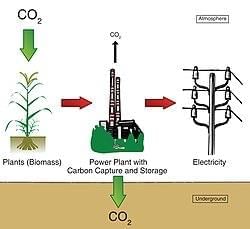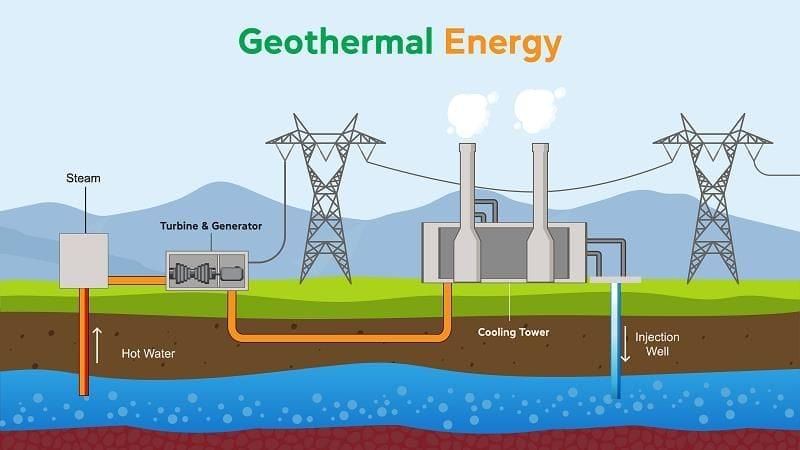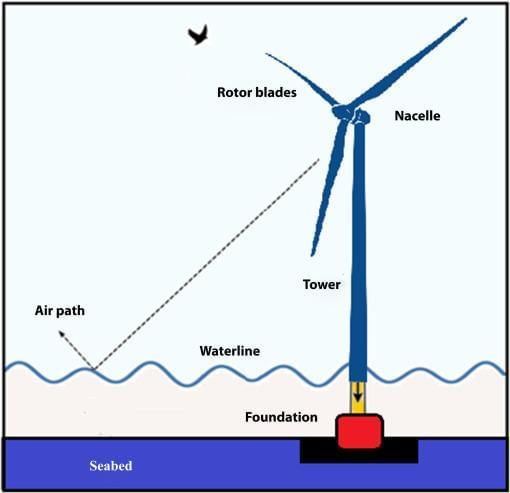Bioenergy, Geothermal, Tidal Energy Potential in India | Science & Technology for UPSC CSE PDF Download
| Table of contents |

|
| Introduction |

|
| Bioenergy |

|
| Geothermal Energy |

|
| Tidal Energy |

|
| India’s Role and Global Context |

|
| Challenges, Future Prospects, and Significance |

|
Introduction
India’s energy transition relies on diversifying its renewable portfolio to meet the needs of its 1.4 billion population and reduce fossil fuel imports (₹12 lakh crore in 2024). Bioenergy utilizes abundant biomass resources (e.g., agricultural residue, municipal waste) to produce electricity, biogas, and biofuels. Geothermal energy taps India’s significant geothermal potential in regions like the Himalayas for clean power. Tidal energy, though nascent, leverages India’s 7,516 km coastline for predictable energy generation. These technologies support the National Action Plan on Climate Change (NAPCC) and complement the National Solar Mission, Wind Mission, and Green Hydrogen Mission. Recent developments, such as the National Bioenergy Programme extension and geothermal pilot projects, underscore their potential.
Bioenergy
 Definition: Energy derived from organic materials (biomass) like agricultural residues, forest waste, municipal solid waste (MSW), and animal dung.
Definition: Energy derived from organic materials (biomass) like agricultural residues, forest waste, municipal solid waste (MSW), and animal dung.Types:
Biomass Power: Combustion or gasification of biomass (e.g., bagasse, rice husk) to generate electricity.
Biogas: Anaerobic digestion of organic waste to produce methane-rich gas for cooking, power, or transport.
Biofuels: Liquid fuels like bioethanol (from sugarcane, corn) and biodiesel (from vegetable oils, animal fats) for transport.
Advanced Biofuels: Second-generation (2G) biofuels from lignocellulosic biomass (e.g., crop residues); third-generation from algae.
Specifications: Biomass power plants (1–10 MW); biogas plants (1–500 kW); biofuel energy density ~20–30 MJ/kg.
Potential in India
Resource: ~750 MMT of biomass annually (230 MMT agricultural residue, 180 MMT surplus); potential for 25 GW power, 35 MMT biofuels.
Applications: Rural electrification, cooking (biogas), transport (bioethanol, biodiesel), and industrial heat.
Key Regions: Uttar Pradesh, Punjab, Maharashtra (high agricultural residue); urban areas for MSW-based biogas.
India’s Initiatives
National Bioenergy Programme (2021–26): ₹858 crore for biomass, biogas, and bio-CNG; extended to 2030 in 2025.
Schemes:
Biomass Power & Cogeneration: Supports 900 MW capacity addition by 2026.
Biogas Programme: Targets 10 million biogas plants by 2030; ~5 million operational (2025).
SATAT Initiative (2018): Promotes Compressed Bio-Gas (CBG) for transport; 5,000 CBG plants planned by 2030, 100 operational (2025).
Ethanol Blending: 20% ethanol blending (E20) achieved in 2025, up from 10% in 2022.
Institutions: Indian Renewable Energy Development Agency (IREDA) funds projects; BARC and MNRE drive R&D.
Budget 2025-26: ₹2,000 crore for bioenergy, including ₹500 crore for 2G ethanol plants.
Progress (as of 2025)
Capacity: 10.7 GW biomass power; 0.5 GW biogas; 12 MMT bioethanol production.
Achievements:
400 CBG plants under construction via SATAT.
2G ethanol plants operational in Punjab and Haryana (2024).
Biogas plants reached 5 million households, reducing LPG imports.
Challenges:
Supply Chain: Inefficient biomass collection and logistics; only 30% of residue utilized.
Cost: Biomass power costs ₹7–9/kWh vs. ₹3–4/kWh for solar.
Technology: 2G biofuel tech expensive; scaling algae-based biofuels nascent.
Land Use: Competition with agriculture for biomass feedstock.
Global Context
Market: Global bioenergy capacity ~140 GW (2025); biofuels ~150 billion liters.
Leaders: Brazil (bioethanol), US (biodiesel), EU (biomass power).
Trends: Focus on 2G biofuels and waste-to-energy; India’s SATAT model gaining global attention.
Geothermal Energy

Definition: Energy from Earth’s internal heat, accessed via geothermal reservoirs (hot water/steam) or heat pumps.
Types:
Dry Steam: Direct steam from reservoirs to turbines (e.g., The Geysers, US).
Flash Steam: High-pressure hot water flashed to steam for power.
Binary Cycle: Low-temperature water heats a secondary fluid to drive turbines; most versatile.
Geothermal Heat Pumps: Use shallow ground heat for heating/cooling.
Specifications: Power plants (1–100 MW); efficiency ~10–20%; lifespan ~30–50 years.
Potential in India
Resource: ~10 GW potential across 300 geothermal sites (hot springs, geysers).
Key Regions: Himalayas (Ladakh, Himachal Pradesh), Puga Valley (J&K), Tattapani (Chhattisgarh), Cambay Basin (Gujarat).
Applications: Electricity generation, direct heating (greenhouses, aquaculture), space heating.
India’s Initiatives
Policy: MNRE’s Geothermal Energy Development Framework (2016); targets 1 GW by 2030.
Projects:
Puga Valley Pilot (Ladakh): 1 MW binary cycle plant under development (2025).
Tattapani Pilot (Chhattisgarh): 300 kW geothermal heat pump operational (2024).
R&D: Geological Survey of India (GSI) maps geothermal fields; IIT Bombay develops heat pump tech.
Budget 2025-26: ₹500 crore for geothermal pilots and exploration.
Progress (as of 2025)
Capacity: <10 MW (pilot stage); Puga plant expected to start by 2026.
Achievements: GSI identified 50 new geothermal sites in 2024; Ladakh project secured ₹100 crore private investment.
Challenges:
High Costs: ₹15–20 crore/MW for drilling and exploration.
Geological Risks: Uncertain reservoir viability; high upfront investment.
Technology: Limited expertise in binary cycle systems; reliance on foreign tech.
Infrastructure: Remote locations (e.g., Himalayas) lack grid connectivity.
Global Context
Market: Global geothermal capacity ~16 GW (2025); led by US, Indonesia, Philippines.
Trends: Focus on enhanced geothermal systems (EGS) and low-temperature binary plants; India learning from Iceland’s expertise.
Tidal Energy
 Definition: Energy from tidal movements or waves, converted via turbines or oscillating devices.
Definition: Energy from tidal movements or waves, converted via turbines or oscillating devices.Types:
Tidal Stream: Turbines in tidal currents (similar to wind turbines).
Tidal Barrage: Dams trap tidal water, releasing it through turbines.
Wave Energy: Devices capture wave motion for power.
Specifications: Plants range 1–250 MW; efficiency ~80%; predictable output tied to tidal cycles.
Potential in India
Resource: ~12.5 GW potential along 7,516 km coastline; key areas include Gulf of Kutch (8 GW), Gulf of Cambay (4 GW), Sundarbans.
Applications: Coastal power generation, grid support, island electrification (e.g., Andaman & Nicobar).
India’s Initiatives
Policy: MNRE’s Ocean Energy Policy (draft 2023) targets 1 GW tidal/wave energy by 2030.
Projects:
Gulf of Kutch Pilot: 50 MW tidal stream project under feasibility study (2025).
Andaman & Nicobar: 10 kW wave energy pilot operational (2024).
R&D: National Institute of Ocean Technology (NIOT) develops tidal turbines; IIT Madras tests wave converters.
Budget 2025-26: ₹200 crore for tidal energy pilots and R&D.
Progress (as of 2025)
Capacity: <1 MW (pilot stage); Gulf of Kutch project to start by 2027.
Achievements: NIOT’s wave converter reached 80% efficiency in 2024 trials.
Challenges:
High Costs: ₹25–30 crore/MW, higher than solar/wind.
Environmental Impact: Barrages disrupt marine ecosystems; regulatory approvals slow.
Technology: Limited domestic expertise; reliance on European tidal tech.
Infrastructure: Coastal grid integration and maintenance challenging.
Global Context
Market: Global tidal/wave capacity ~1 GW (2025); led by UK, France, South Korea.
Trends: Focus on tidal stream systems; UK’s MeyGen (400 MW) sets global benchmark.
India’s Role and Global Context
India’s Role
Bioenergy: Leverages 750 MMT biomass for 10.7 GW power; SATAT and ethanol blending reduce fuel imports.
Geothermal: 10 GW potential positions India for niche clean energy in Himalayan regions.
Tidal: 12.5 GW coastal potential supports island and grid applications.
Policy Support: National Bioenergy Programme, Ocean Energy Policy, and 2025-26 budget drive progress.
Private Sector: Reliance, Adani, and NTPC invest in bioenergy; startups like Altmin explore geothermal.
Global Context
Bioenergy: 140 GW globally; Brazil’s ethanol model inspires India’s E20 success.
Geothermal: 16 GW globally; Iceland’s expertise guides India’s Puga project.
Tidal: 1 GW globally; UK’s tidal stream tech informs India’s Gulf of Kutch pilot.
Trends (2025): Waste-to-energy for bioenergy, EGS for geothermal, and scalable tidal turbines.
Recent Developments
Budget 2025-26: ₹2,700 crore for bioenergy, geothermal, and tidal projects.
International Ties: India-Iceland MoU (2024) for geothermal tech; India-UK collaboration for tidal turbines.
Pilot Projects: 2G ethanol plants (Punjab, 2024), Puga geothermal pilot (2025), Andaman wave pilot (2024).
R&D: NIOT and IITs advance tidal and geothermal tech; BARC scales biogas systems.
Challenges, Future Prospects, and Significance
Challenges
Cost: Bioenergy (₹7–9/kWh), geothermal (₹15–20 crore/MW), and tidal (₹25–30 crore/MW) are costlier than solar/wind.
Infrastructure: Limited biomass supply chains, geothermal drilling facilities, and coastal grids.
Technology: Reliance on foreign tech for geothermal and tidal; 2G biofuels nascent.
Environmental Concerns: Biomass land use and tidal barrages impact ecosystems.
Public Awareness: Low adoption of biogas in rural areas; geothermal/tidal projects face local resistance.
Future Prospects
Bioenergy: 25 GW by 2030; 10 million biogas plants and 5,000 CBG plants by 2030.
Geothermal: 1 GW by 2030; Puga and Tattapani plants to scale by 2035.
Tidal: 1 GW by 2030; Gulf of Kutch project to lead coastal energy.
Policy Integration: Green Energy Corridor II (2025) to support grid integration.
Global Leadership: India to export bioenergy tech to Global South; geothermal/tidal pilots to attract FDI.
Significance for India
Energy Security: Reduces fossil fuel imports (₹12 lakh crore in 2024), supporting 1.4 billion population.
Climate Goals: Cuts 20 MMT CO2 annually by 2030; aligns with net-zero by 2070 and SDG 13.
Economic Impact: Creates 2 lakh jobs; contributes to $1 trillion renewable economy by 2035.
Global Standing: Strengthens India’s role in ISA, G20, and UNFCCC via bioenergy leadership.
Bioenergy, geothermal, and tidal energy are vital for diversifying India’s renewable energy portfolio, leveraging abundant biomass (750 MMT), geothermal (10 GW), and tidal (12.5 GW) resources. Initiatives like the National Bioenergy Programme, Puga geothermal pilot, and Gulf of Kutch tidal project, backed by the 2025-26 budget, reflect India’s commitment. Addressing challenges like costs, technology, and infrastructure will ensure scalability.
|
90 videos|491 docs|209 tests
|
FAQs on Bioenergy, Geothermal, Tidal Energy Potential in India - Science & Technology for UPSC CSE
| 1. What is bioenergy and how can it be utilized in India? |  |
| 2. What are the potential advantages of geothermal energy for India? |  |
| 3. How does tidal energy work and what is its relevance to India? |  |
| 4. What role does India play in the global context of renewable energy? |  |
| 5. What are the challenges facing the development of bioenergy, geothermal, and tidal energy in India? |  |















